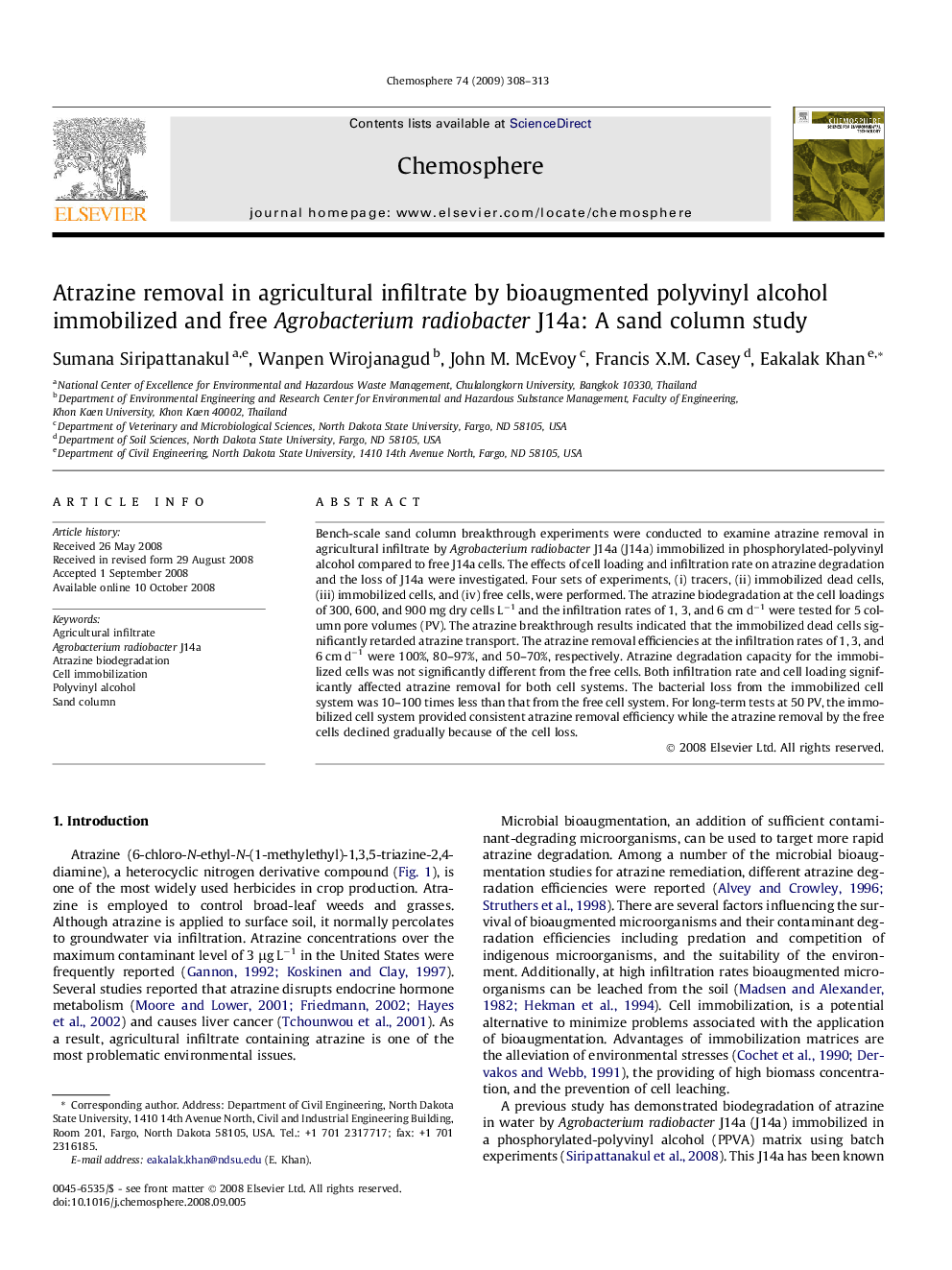| Article ID | Journal | Published Year | Pages | File Type |
|---|---|---|---|---|
| 4413297 | Chemosphere | 2009 | 6 Pages |
Bench-scale sand column breakthrough experiments were conducted to examine atrazine removal in agricultural infiltrate by Agrobacterium radiobacter J14a (J14a) immobilized in phosphorylated-polyvinyl alcohol compared to free J14a cells. The effects of cell loading and infiltration rate on atrazine degradation and the loss of J14a were investigated. Four sets of experiments, (i) tracers, (ii) immobilized dead cells, (iii) immobilized cells, and (iv) free cells, were performed. The atrazine biodegradation at the cell loadings of 300, 600, and 900 mg dry cells L−1 and the infiltration rates of 1, 3, and 6 cm d−1 were tested for 5 column pore volumes (PV). The atrazine breakthrough results indicated that the immobilized dead cells significantly retarded atrazine transport. The atrazine removal efficiencies at the infiltration rates of 1, 3, and 6 cm d−1 were 100%, 80–97%, and 50–70%, respectively. Atrazine degradation capacity for the immobilized cells was not significantly different from the free cells. Both infiltration rate and cell loading significantly affected atrazine removal for both cell systems. The bacterial loss from the immobilized cell system was 10–100 times less than that from the free cell system. For long-term tests at 50 PV, the immobilized cell system provided consistent atrazine removal efficiency while the atrazine removal by the free cells declined gradually because of the cell loss.
